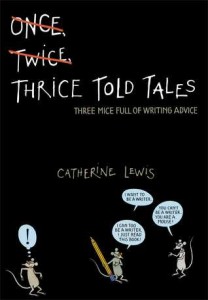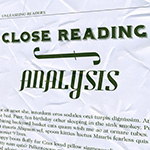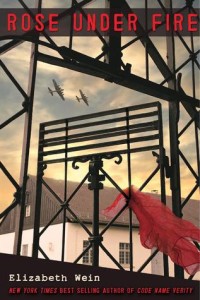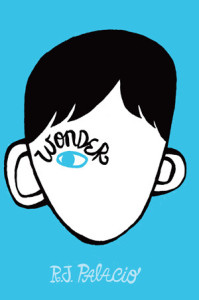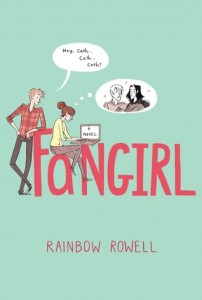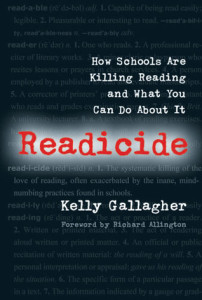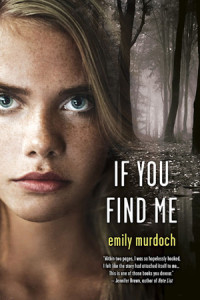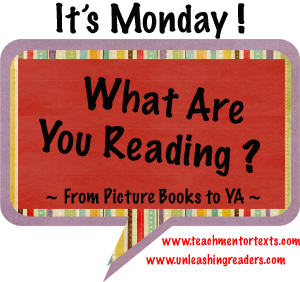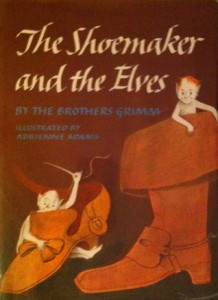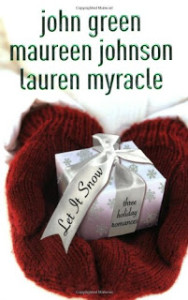Thrice Told Tales: Three Mice Full of Writing Advice
Author: Catherine Lewis
Published: August 27th, 2013 by Atheneum Books for Young Readers
GoodReads Summary: Three Blind Mice. Three Blind Mice. See how they run? No. See how they can make all sorts of useful literary elements colorful and easy to understand! Can one nursery rhyme explain the secrets of the universe? Well, not exactly—but it can help you understand the difference between bildungsroman, epigram, and epistolary.
From the absurd to the wish-I’d-thought-of-that clever, writing professor Catherine Lewis blends Mother Goose with Edward Gorey and Queneau, and the result is learning a whole lot more about three not so helplessmice, and how to fine tune your own writing, bildungsroman and all.
If your writing is your air, this is your laughing gas.*
*That’s a metaphor, friends.
Review: This is one of those books that is so clever, I am depressed that I didn’t come up with the idea myself. Reading and writing teachers will adore the way this book is constructed and be excited to use it in their classrooms. A different writing term is creatively interpreted on each page within the context of the Three Blind Mice nursery rhyme. At the bottom of each page, Lewis gives an explanation of the writing term and how it can be employed in writing (see the flagged passage below). I loved the ways Lewis humorously portrayed each term. For example, on the page about style, she takes a line from the nursery rhyme and rewrites it in the style of famous authors like Dickens and Hemingway. As a bonus, I learned about a few literary terms that I didn’t know! It was so fun to read. I shared it with my pre-service teachers, and they also adored it and were excited to use it in their own classrooms.
Teacher’s Tools for Navigation: Teachers can hand-pick terms they want to teach to their students. I wish this book was published when I was teaching because it makes the literary terms very accessible. Teachers can take the terms and ask students to reinterpret them within the context of a different nursery rhyme (or even within the context of a song or movie).
Discussion Questions: How can I rewrite a nursery rhyme to show a literary term?; How can I employ these literary/writing terms to make me a better writer?
We Flagged: “Developing one’s style is like developing a sense of fashion. You may start off by trying on a lot of costume jewelry; big showy ten-dollar words. They’ll get attention all right, but maybe you’ll discover there’s something better out there for you. Perhaps you’ll try a charm bracelet full of dangling modifiers. Or a simple silver bracelet and an onyx ring. Keep experimenting for pleasant combinations, and a truer picture of yourself and your work will begin to emerge” (p. 134).
Read This If You Loved: In the Middle by Nancie Atwell, Bird by Bird by Anne Lamott, Writing Workshop by Ralph Fletcher, Celebrating Writers by Ruth Ayres with Christi Overman
Recommended for:
What is your favorite book for teaching writing? Can you think of creative ways to use this in the classroom?
